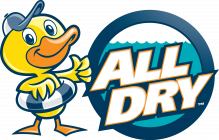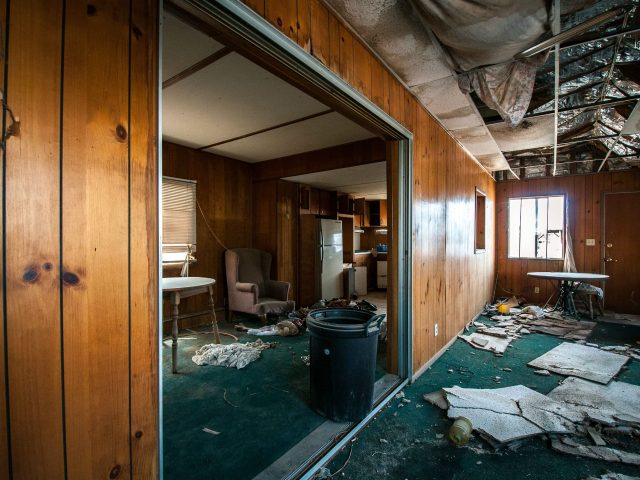Let’s face it—sewage spills are a homeowner’s nightmare. They’re messy, stressful, and pose serious health hazards if not handled correctly.
The most important step? Thorough disinfection to stop harmful pathogens from spreading.
Whether it’s due to heavy rains, a backed-up sewer line, or a septic tank failure, sewage spills can quickly turn into a dangerous situation. But you’re not in this alone—All Dry Jacksonville is here to help.
Our team of certified experts responds quickly and handles every aspect of the cleanup—from removing hazardous waste to deep cleaning and disinfecting the area. We’re here to restore your property, protect your health, and bring peace of mind when you need it most.
In this blog, we’ll break down everything you need to know:
- What causes sewage spills and the risks they bring
- The step-by-step cleanup and disinfection process
- Best practices for waste disposal, decontamination, and restoration
Let’s dive in.
What Causes a Sewage Spill?
Sewage backups don’t happen randomly—there’s always an underlying issue. Some of the most common culprits include:
- Aging or damaged sewer lines
- Heavy rainfall or flooding that overwhelms systems
- Clogged pipes from flushing wipes, grease, or hygiene products
- Septic tank failures due to lack of maintenance
Understanding the cause is key to fixing the problem—and preventing it from happening again.
Why Sewage Spills Are Dangerous
Sewage contains harmful bacteria, viruses, and parasites that can cause serious illness. Even airborne particles can affect your health. The longer waste sits, the more it spreads—and the higher the risk.
Environmentally, spills can contaminate soil and waterways, disrupting local ecosystems and creating long-term damage. That’s why a fast, thorough response is so important.
First Steps: What to Do Immediately
If you’re facing a sewage spill, here’s what to do first:
- Stay out of the affected area to avoid exposure.
- Call professionals immediately—the faster the response, the less damage.
- Shut off electricity in affected areas (if safe to do so).
- Block off the spill using sandbags or plastic sheeting to contain it.
And remember—don’t try to clean it up yourself without proper protective equipment.
Sewage Cleanup Process: What to Expect
At All Dry Services, we follow a proven process to ensure every job is done safely and thoroughly.
1. Assessment and Planning
We start by identifying the source of the spill, the size of the affected area, and the type of waste. This helps us create a targeted cleanup plan tailored to your property.
2. Safe Waste Removal
Our team uses specialized equipment to remove all contaminated materials—including solid waste, water, and affected building materials.
3. Deep Cleaning and Sanitization
Every surface is scrubbed and treated with hospital-grade disinfectants that kill harmful pathogens.
4. Structural Drying
We bring in industrial-grade air movers and dehumidifiers to remove hidden moisture and stop mold before it starts.
5. Final Disinfection
We apply disinfectants using foggers or sprayers to ensure full coverage. We test surfaces to confirm that the area is safe and clean.
Waste Disposal and Decontamination
Safe disposal is just as important as the cleanup itself. We transport hazardous waste to licensed facilities and follow strict local and federal regulations.
All tools and gear used in the cleanup process are fully disinfected or safely discarded to prevent cross-contamination.
Restoration and Repairs
Once your space is clean and safe, it’s time to get things back to normal.
We remove unsalvageable materials (like soaked drywall or carpet), disinfect reusable surfaces, and begin restoring your home. This might include:
- Replacing drywall, flooring, or insulation
- Treating the area for lingering odors
- Restoring landscaping affected by outdoor spills
Our team ensures your property is safe, functional, and restored to its pre-loss condition—or better.
Preventing Future Spills
Here’s how you can reduce the risk of another backup:
- Don’t flush anything other than toilet paper.
- Schedule regular plumbing inspections.
- Clean your drains routinely.
- Install backflow valves if you’re in a flood-prone area.
- Maintain your septic system if applicable.
Need help? We’re happy to provide a preventative maintenance plan for your property.
Why Call All Dry Services?
Sewage spills are serious. But with the right team on your side, they don’t have to be a disaster. At All Dry Jacksonville, we bring:
- Fast response times
- Professional-grade equipment
- Certified technicians
- Full-service restoration
From cleanup to repairs—we handle it all.
FAQs
What should I do first if I have a sewage spill?
Stay safe—evacuate the area, shut off electricity if needed, and call the pros.
Can I clean a sewage spill myself?
It’s not recommended. Sewage contains harmful bacteria, and you need PPE and professional-grade disinfectants to do it safely.
How much does professional cleanup cost?
It varies depending on the extent of the damage. Call us for a free inspection and quote.
Will my insurance cover the cleanup?
Most policies cover sewage backups—but it depends on your plan. We can work with your insurer to help you file a claim.
How long does it take to clean and disinfect?
It depends on the size of the spill, but we typically complete the job within a day or two—faster for smaller incidents.
Get Help Now
Dealing with a sewage spill? Don’t wait. The longer you delay, the greater the health risks and property damage.
Call All Dry Jacksonville today for emergency response and expert cleanup. We’re here 24/7 to protect your home and get your life back on track.

